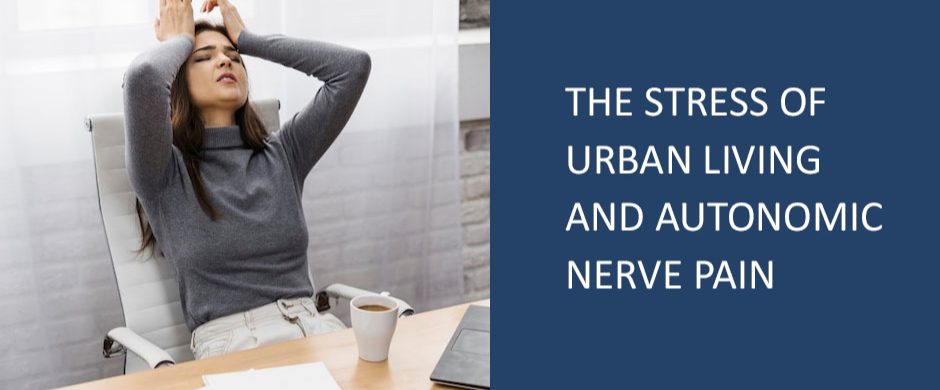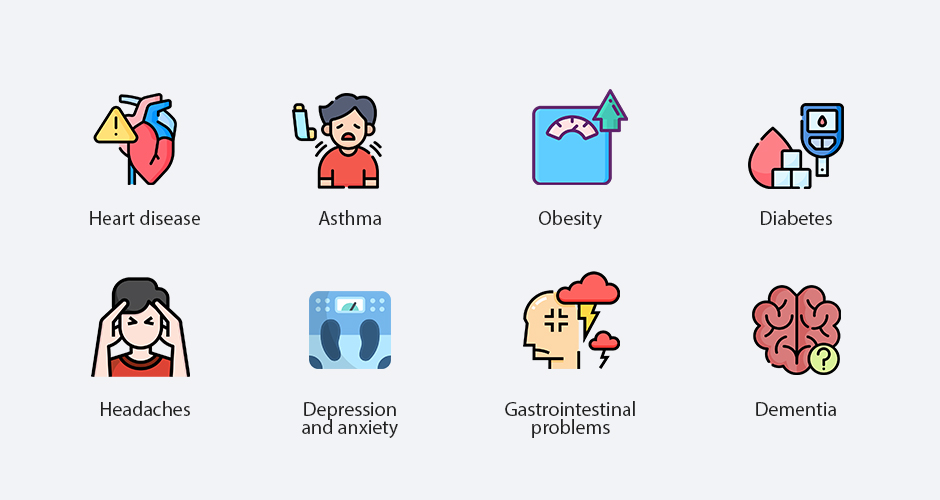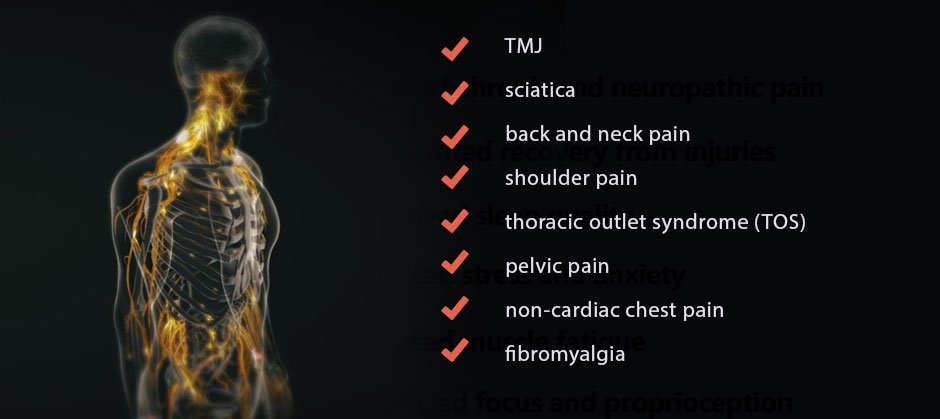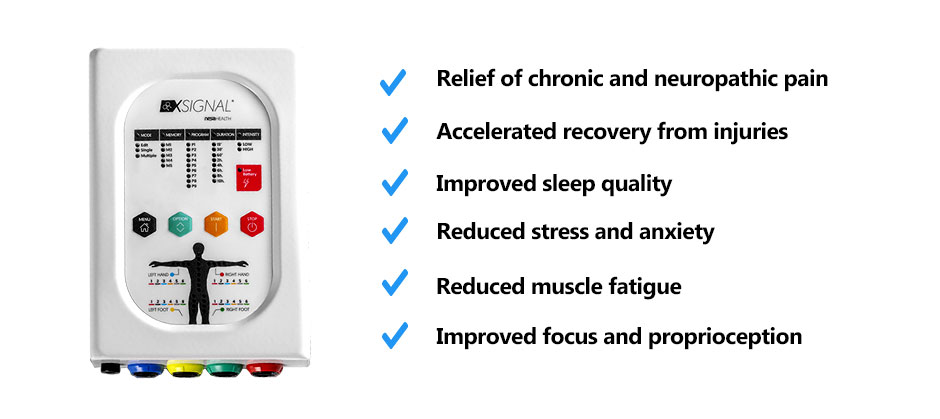
Living and working in a bustling metropolis offers endless opportunities for work, business, art, entertainment and social life. But urban living has its downsides. Constant noise, round-the-clock activity, environmental toxins, workplace stress and health concerns all take their toll, contributing to chronic stress that affects physical and mental health.
Chronic stress can cause the autonomic nervous system to become hyper-sensitized, sending pain signals to your brain where no injury exists. Learn about how the stresses of urban living impact your health, and how NESA neuromodulation therapy can help.
The nerves throughout your body operate by electrical impulses that send messages back and forth between your body and your brain. Your autonomic nervous system is especially important because it regulates involuntary physiologic functions such as heart rhythms, blood pressure, respiration, digestion, and reproductive performance.
When you are perpetually exposed to physical or psychological stress, or both, your stress response system kicks in to evaluate and help manage real or perceived dangers. The mechanisms that integrate your brain and body become engaged, to process and interpret stressors.
To restore homeostasis — the body’s ideal state of balance — energy is mobilized, the immune system goes into overdrive, metabolic changes occur, and the digestive and reproductive systems are suppressed. The immune system triggers a pro-inflammatory response that causes changes in the excitability of cells, and in the plasticity of neurons and synapses.
Under conditions of a single stress-induced episode, these mechanisms are able to successfully restore homeostasis, and the body returns to its normal non-stressed state. But when stress is relentless and ongoing, the stress response endures, and prolonged physiologic changes begin to cause health issues.
A broad range if metabolic issues have been associated with chronic stress, including:

Heart disease
Asthma
Obesity
Diabetes
Headaches
Depression and anxiety
Gastrointestinal problems
Dementia
In addition, chronic stress can cause the autonomic nervous system to become hyper-sensitized to the point where it sends pain signals to the brain in disproportion to actual structural damage to the body.
Chronic stress can spark your autonomic nervous system to become hyper-sensitized, causing it to send inaccurate information to your brain that is out of sync with what is actually going on in your body.
Symptoms of many pain syndromes and conditions are exaggerated by a hyper-stimulated autonomic nervous system, including:
TMJ
sciatica
back and neck pain
shoulder pain
thoracic outlet syndrome (TOS)
pelvic pain
non-cardiac chest pain
fibromyalgia

Patients are often baffled and frustrated when MRI imaging fails to reveal structural damage that correlates with their level of perceived pain. And until recently, doctors had no idea how to treat the autonomic nervous system.
Technological advances have profoundly affected every industry, and rehabilitative medicine is no exception. From diagnostic tools that quantify baseline parameters to regenerative technologies that stimulate healing, technology has been a game changer for patients suffering from physical pain and dysfunction.
NESA neuromodulation is a new non-invasive technology that leverages the body’s own electrical pathways by delivering patented intelligent microcurrents through low impedance areas of the body. The microcurrents are sent via 24 semi-electrodes, attached at the distal nerve endings of the hands and feet. NESA generates an electrical algorithm in a series of intermittent and cyclical stimuli. The electrical stimulus travels through autonomic neural pathways, calming hyper-sensitized nerves and restoring optimal neural signaling to the brain.
When delivered by a trained clinician, NESA neuromodulation is completely safe and non-invasive. Athletes and fitness enthusiasts can benefit from NESA therapy to promote recovery from intense training, accelerate injury healing, and enhance physical performance.
But you don’t need to be an athlete to benefit from NESA neuromodulation. People with chronic stress, sleep disorders and pain syndromes can reap the benefits of NESA to restore optimal health.

Relief of chronic and neuropathic pain
Accelerated recovery from injuries
Reduced muscle fatigue
Improved sleep quality
Reduced stress and anxiety
Improved focus and proprioception
NESA therapy is quick and painless, and the patient is fully clothed during treatment. Patients can schedule a NESA session before or after work, or during their lunch break, to eradicate the negative effects of stress and restore physical and psychological balance.
Physical therapy clinics in Manhattan are a-dime-a-dozen, but very few offer personalized diagnosis and treatment based on measurable parameters. At NYDNRehab, we are constantly on the lookout for new technologies that can improve our patients’ quality of life. We are one of the few private clinics in the United States to offer NESA neuromodulation.
Patients often go from one specialist to the next, hoping to resolve their pain and dysfunction, with unsatisfactory results. The advanced technologies and one-on-one treatment approach at NYDNRehab set us apart from other clinics. We are dedicated to getting to the source of your pain and resolving it. Contact NYDNRehab today, and get rid of your pain for good, so you can get back to doing the things you love.
Resource
Godoy, Lívea Dornela, et al. “A comprehensive overview on stress neurobiology: basic concepts and clinical implications.” Frontiers in behavioral neuroscience 12 (2018): 127.
Medina-Ramírez, Raquel Irina, et al. “Nesa Non-Invasive Neuromodulation; A New Frontier of Treatment of the Autonomus Nervous System in Physiotherapy.” CPQ Orthopaedics (2021).
Dr. Lev Kalika is a world-recognized expert in musculoskeletal medicine. with 20+ years of clinical experience in diagnostic musculoskeletal ultrasonography, rehabilitative sports medicine and conservative orthopedics. In addition to operating his clinical practice in Manhattan, he regularly publishes peer-reviewed research on ultrasound-guided therapies and procedures. He serves as a peer reviewer for Springer Nature.
Dr. Kalika is an esteemed member of multiple professional organizations, including: